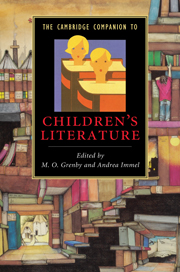Book contents
13 - Traditions of the school story
from Part III - Forms and Themes
Published online by Cambridge University Press: 28 November 2010
Summary
Since the very definition of childhood is often entwined with social norms for schooling, it is unsurprising to find the beginnings of a body of literature that might be identified as specially for children in the ancient and medieval schoolbooks designed to teach young people the manners and the linguistic skills they needed to be successful in their societies, schoolbooks that often took the form of lively dialogues and included diverting accounts of extracurricular episodes of schoolboy life. The traditions of modern English language children's literature, with which this volume is principally concerned, are also rooted in the school story, with Sarah Fielding's story of the nine pupils of Mrs Teachum's 'little female academy', The Governess (1749), frequently identified as the first continuous narrative for children in English. Fielding's narrative stages the binary organising principle of children's literature: the attempt to fuse instruction and delight. Taking as its setting the school, the scene of instruction itself, the story also works to engage readers' interests, by recounting the girls' confessions of the moral struggles they faced in their lives before they entered school, detailing their meetings with the people of Mrs Teachum's neighbourhood during their rambles, tracing the growth of their friendships and sense of common purpose, and, not least, by interpolating the tales the girls read to one another into the narrative of their school life together.
- Type
- Chapter
- Information
- The Cambridge Companion to Children's Literature , pp. 209 - 225Publisher: Cambridge University PressPrint publication year: 2009
- 9
- Cited by



